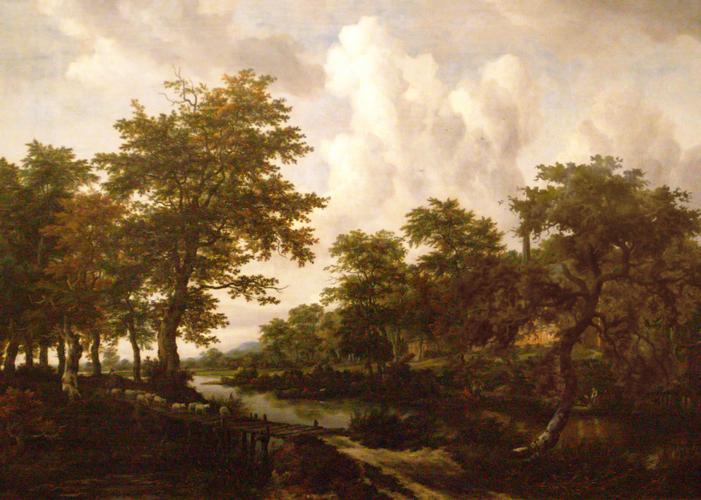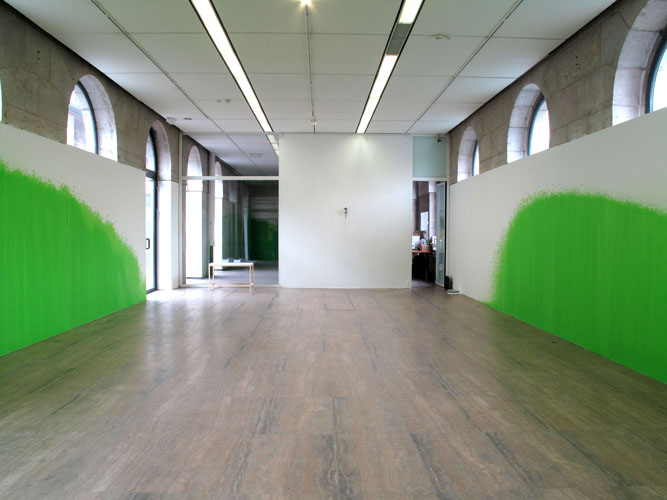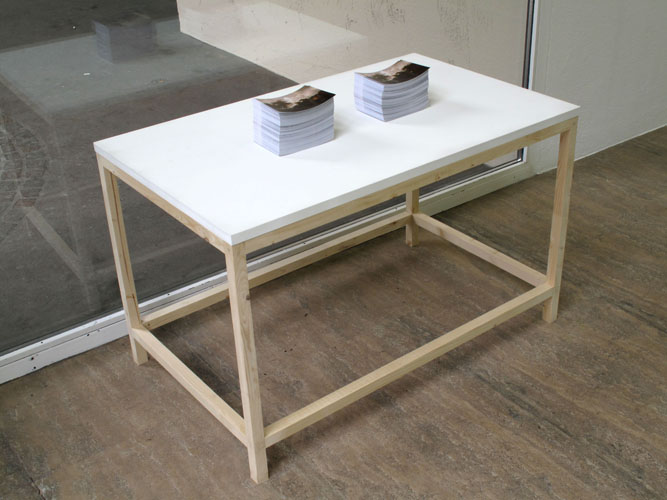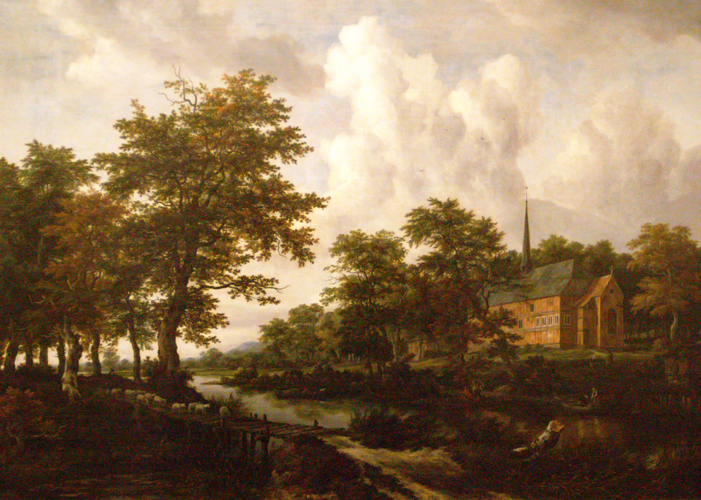Centre de Paysage









Un référent partagé : L’étendue de gazon, verte, aspergée d’eau. De cet agencement, Centre de Paysage reprend les composants pour en faire un agencement ” (prime). L’arroseur automatique crée directement le paysage, grâce aux formes induites par l’intersection du cône de projection (un demi-tore en réalité) et du parralépipède du lieu d’exposition. Comme au cinéma, l’écran arrête le flux pour créer forme et sens. Il est à la charnière de deux types de projections : la première, physique, qui va de l’arroseur au mur, et la seconde, symbolique, qui permet au spectateur de se perdre dans les collines et gerbes végétales ainsi générées.
Peinture et jardin : les deux axes de la notion de paysagisme entrent en conflit. D’un coté le jardinier se prend pour un peintre, de l’autre, avec les cartes postales Pastor, c’est le peintre qui intervient dans le paysage qu’il représente. Cette dernière pièce prend pour point de départ une peinture de Jacob Van Ruysdael exposée à lisbonne. Dans ce tableau d’inspiration pastorale, un tronc est placé de telle sorte que si l’arbre avait été entier, l’église, au fond de la scène, n’aurait pas été visible. S’en suivent des spéculations pour savoir si oui ou non Ruysdael peut être rendu responsable de l’abattage.
A shared referent: The extent of grass, green, sprinkled with water. In this layout, Landscape Centre includes the components to make a layout ‘‘(prime). The sprinkler directly creates the landscape, thanks to forms induced by the intersection of the spray cone (half-torus in reality) and the parallelepiped of the exhibition venue. Like in the movies, the screen stops the flow to create shape and meaning. It is at the junction of two types of projections: the first, physical, which goes from the sprinkler to the wall and the second, symbolic, which enables the audience to lose themselves in the hills and vegetal sprays generated.
Painting and garden: the two lines of the concept of landscape design come into conflict. On one side the gardener sees himself as a painter, on the other, with Pastor postcards, it is the painter who works in the landscape he represents. This last piece takes as its starting point a painting by Jacob van Ruysdael exhibited in Lisbon. In this picture of pastoral inspiration, a trunk is placed so that if the tree was full, the church, at the bottom of the scene, would not have been visible. It is followed by speculations about whether or not Ruysdael can be blamed for the slaughter.
Installation, 2010
Peinture, arroseur automatique, cartes postales
Dimensions variables








